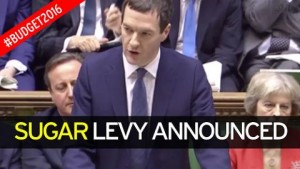By members of the BODE3 and ASPIRE 2025 Teams, University of Otago*
 A series of seven annual tobacco tax increases, typically at the 10% level, will end in January 2016 unless it is extended by the NZ Government. In this blog we take a timely look at what is known about tobacco tax increases in this country, what remains unknown, and what might be needed for the next phase of tobacco taxation related policy and research.
A series of seven annual tobacco tax increases, typically at the 10% level, will end in January 2016 unless it is extended by the NZ Government. In this blog we take a timely look at what is known about tobacco tax increases in this country, what remains unknown, and what might be needed for the next phase of tobacco taxation related policy and research.
Recent trends
The recent pattern of annual tobacco tax increases in NZ has been associated with a 23% reduction in tobacco consumption per adult (for the period 2010 to 2014) (1). Smoking prevalence has also continued to decline for all major population groups (as per census data for 2013). Youth smoking in particular has continued to decline steeply (see the series of ASH Year 10 Surveys).
Such patterns are consistent with the extensive international literature on the effectiveness of tobacco tax as a tobacco control intervention (2). In particular, it is well established that youth are particularly sensitive to high tobacco prices (3). However, these trends are also likely to be partly due to other non-tax policies such as extensions of smokefree environments, removal of point-of-sale tobacco product displays, mass media campaigns, and enhanced smoking cessation service provision.
The falls in consumption and prevalence have occurred despite the tobacco industry using pricing strategies to blunt the impact of the tax increases by minimising changes in the price of budget brands. For example, the 10% tax increase in January 2014 resulted in only a 2.6% price increase for a budget brand relative to a 8.3% price in a premium brand (based on a NZ survey of 448 retailers (4)). Such pricing strategies provide a means for some smokers to mitigate the impact of the increases by switching to cheaper brands rather than quitting.
Large health gains from tobacco tax increases
NZ research published in 2015 (5) indicates large health gains from ongoing 10% annual tobacco tax rises until 2031, an estimated 260,000 quality-adjusted life-years (QALYs) gained over the remaining lifetime of the 2011 NZ population (see this blog for further details). These health gains do not seem to be threatened by trends in illicit trade in tobacco which is still at very low levels in this country (6). Even modest growth in such trade seems unlikely to have much impact on the success of higher tobacco taxes according to a NZ-specific model (7).
Tobacco tax is good for improving Māori health and reducing health disparities
Although tobacco tax is typically described as being a “regressive tax” overall, actual increases in this tax can be progressive due to the typically greater price sensitivity of low-income populations. Indeed, the two most relevant systematic reviews indicate that tobacco price/tax increases tended to have a positive impact on equity (i.e., in terms of reduction in inequalities in smoking prevalence by socioeconomic status for both adults (8) and youth (9)). A specific recent example is Turkey, where a study (10) found poorer households had enough quitting/reduced consumption to actually result in reduced expenditure on tobacco (albeit with the more wealthier smokers in Turkey paying relatively more). For a graph of this impact in Turkey see this presentation by Prof Frank Chaloupka, an international tobacco tax expert who recently visited NZ.
Furthermore, NZ research indicates that health gains per person from higher tobacco taxes have been estimated to be 3.7 times greater for Māori compared to non-Māori (5). But to still help minimise any financial hardship effects on low-income continuing smokers, it is highly desirable that there is additional targeted smoking cessation support, which could be funded from extra revenue from the tobacco excise increases. The latter is supported by most NZ smokers, of whom 59% favour increased tobacco taxes – “if the extra revenue was used to promote healthy lifestyles and support quitting” (11). There is also an ethical case for such a “dedicated tax” approach (12).
Large cost savings to the NZ health system, but unknown wider impacts to NZ society
The NZ modelling work (5) also indicates large health cost savings from raising tobacco taxes ($3.8 billion saved over the lifetime of the current NZ population). This is even when accounting for the extra health costs from the longer lifespan of ex-smokers. Additional benefits not counted in this analysis arise to the NZ economy from reduced premature death among workers (e.g., from heart attacks and cancer), and from disability (e.g., strokes can prevent people returning to work). Further benefits will come from preventing adverse smoking impacts on infants and children (e.g., from low birth weight and asthma) that may harm long-term educational outcomes and hence employment. But these types of productivity issues remain to be clarified for the NZ setting, along with the implications for extra income tax revenue for the government from healthier workers. Even so, a recent international review provides overall evidence that raising tobacco prices through taxes results in “substantial healthcare cost savings and can generate additional gains from improved productivity in the workplace” (13).
Remaining uncertainties that could benefit from further research
Although it is clear that a comprehensive programme of tax increases is required, there are some remaining uncertainties and hence need for further research and evaluation.
The international research literature is unclear on whether regular increases as per the recent pattern in NZ, or more episodic but larger tax increases would be most effective. Regular annual pre-announced increases have the potential advantages of:
- Signalling to smokers that the future is one of regular on-going price increases.
- Normalising the role of tax as an important component of the tobacco control strategy to achieve the 2025 goal and within NZ’s political culture.
- Possibly being more acceptable to NZ politicians than less frequent but larger increases (via triggering less media and public discourse around each increase).
But less frequent but larger increases have the potential advantages of:
- Being more effective by being more noticeable to smokers and also being harder for the tobacco industry to smooth out the price increase (e.g., by stock management and providing budget brands).
- Stimulating more media attention – which may stimulate more interest in quitting.
- Putting more pressure on policy-makers to do more to help smokers quit (e.g, via funding accompanying mass media campaigns).
A way forward might be to conduct experimental studies with smokers that compare the perceived impact of a sharp 40% increase with two 20% increases over a longer time period or even to implement both approaches nationally over the next 3-4 years and monitor and compare outcomes.
Future tax increases should be accompanied by complementary interventions such as state-of-the-art mass media campaigns that encourage and support quitting. So these also need research to determine optimal design for the NZ setting. Indeed, we need a range of research on effectiveness and cost-effectiveness to determine the best mix of all plausible tobacco control interventions (including further smokefree environment laws, product regulation, and smoking cessation services).
Recommendations for tobacco tax policy to achieve Smokefree 2025
Tobacco tax increases will be an essential component of the comprehensive effort needed in NZ to achieve its goal of becoming Smokefree by 2025. Modelling-level evidence suggests that despite the favourable trends in declining tobacco consumption in NZ, the current business-as-usual approach (even with 10% annual tax increases) is very unlikely to be strong enough to meet the 2025 goal (7, 14). Therefore a series of regular tax increases, preferably at a higher level than the recent series of 10% annual increases, should be implemented up to 2025, accompanied by other enhanced tobacco control policies (ideally all funded with tobacco tax revenue).
Conclusions
Tobacco tax increases are an important means to generate health gain in NZ, reduce health inequalities, and save health costs. Nevertheless, NZ will need additional tobacco control strategies if it is to have a high probability of achieving the Government’s Smokefree 2025 goal. The tax increases should be accompanied by rigorous evaluation and research so that the most effective approaches can be identified to inform subsequent interventions to achieve Smokefree 2025 and to generate knowledge for other countries seeking to reach their own endgame goals.
* Authors: * Associate Professor Nick Wilson, Professor Tony Blakely, Professor Richard Edwards, Dr Nhung Nghiem, Frederieke Sanne van der Deen, Dr Cristina Cleghorn
References
- Laugesen M: Analysis of Manufacturers’ Returns on Tobacco. Report to the Ministry of Health for 2014. 2015. https://www.health.govt.nz/system/files/documents/pages/tobacco-returns-2014-analysis-report.pdf.
- IARC: Effectiveness of Tax and Price Policies for Tobacco Control. IARC Handbooks of Cancer Prevention in Tobacco Control, Volume 14. Lyon: International Agency for Research on Cancer (IARC); 2011.
- Chaloupka FJ, Yurekli A, Fong GT: Tobacco taxes as a tobacco control strategy. Tob Control 2012, 21(2):172-180.
- Marsh L, Cameron C, Quigg R, Hoek J, Doscher C, McGee R, Sullivan T: The impact of an increase in excise tax on the retail price of tobacco in New Zealand. Tob Control 2015, (E-publication 2 July).
- Blakely T, Cobiac LJ, Cleghorn CL, Pearson AL, van der Deen FS, Kvizhinadze G, Nghiem N, McLeod M, Wilson N: Health, health inequality, and cost impacts of annual increases in tobacco tax: Multistate life table modeling in New Zealand. PLoS Med 2015, 12(7):e1001856.
- Ajmal A, U V: Tobacco tax and the illicit trade in tobacco products in New Zealand. Aust N Z J Public Health 2015, 39(2):116-120.
- Cobiac LJ, Ikeda T, Nghiem N, Blakely T, Wilson N: Modelling the implications of regular increases in tobacco taxation in the tobacco endgame. Tob Control 2015, 24(e2):e154-160.
- Brown T, Platt S, Amos A: Equity impact of population-level interventions and policies to reduce smoking in adults: a systematic review. Drug Alcohol Depend 2014, 138:7-16.
- Brown T, Platt S, Amos A: Equity impact of interventions and policies to reduce smoking in youth: systematic review. Tob Control 2014, [E-publication 19 May].
- Onder Z, Yurekli AA: Who pays the most cigarette tax in Turkey. Tob Control 2014, (E-publication 16 September).
- Wilson N, Weerasekera D, Edwards R, Thomson G, Devlin M, Gifford H: Characteristics of smoker support for increasing a dedicated tobacco tax: national survey data from New Zealand. Nicotine Tob Res 2010, 12(2):168-173.
- Wilson N, Thomson G: Tobacco taxation and public health: ethical problems, policy responses. Soc Sci Med 2005, 61(3):649-659.
- Contreary KA, Chattopadhyay SK, Hopkins DP, Chaloupka FJ, Forster JL, Grimshaw V, Holmes CB, Goetzel RZ, Fielding JE, Community Preventive Services Task F: Economic Impact of Tobacco Price Increases Through Taxation: A Community Guide Systematic Review. Am J Prev Med 2015, 49(5):800-808.
- van der Deen FS, Ikeda T, Cobiac L, Wilson N, Blakely T: Projecting future smoking prevalence to 2025 and beyond in New Zealand using smoking prevalence data from the 2013 Census. N Z Med J 2014, 127(1406):71-79.




